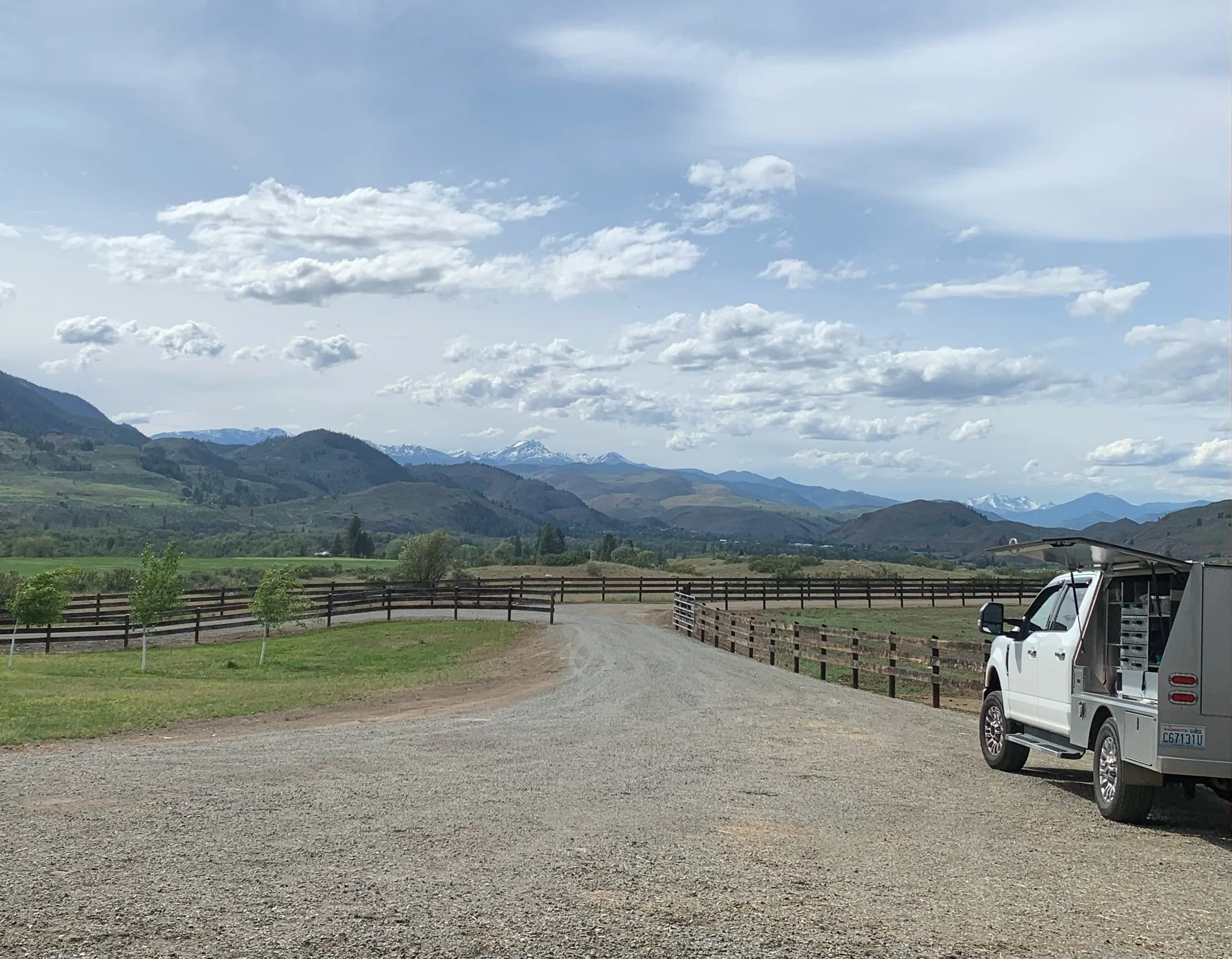
Routine Care
Routine Care
The foundation of dental health lies in an annual comprehensive exam with appropriate dental adjustments. Small problems caught early by an experienced eye and skillfully treated can keep them from developing into larger ones.
Physical Exam
A brief physical exam is performed to determine the overall health of your horse. Besides listening to the heart and taking basic vitals, the body condition and overall demeanor is noted. The horse’s head is then examined more closely- noting any structural or muscular asymmetries, swelling or enlargements. If the horse is having difficulty eating, then it will be watched chewing hay or a treat. All these factors help to assess if there is a potential dental concern and how the horse will handle the procedure.
Oral Exam
If the horse appears to be healthy with no concerns that need to be addressed first, the horse is sedated. An exam of the horse’s dental occlusion and excursion is evaluated with the mouth closed. With the mouth closed, a better assessment of how the teeth contact to grind food can be made. A speculum is then placed to open the mouth for a more thorough exam of the soft tissue structures and dentition. Soft tissue structures include the tongue, soft and hard palate, gingiva and mucosal lining of the cheeks. Any abnormality or injury to the soft tissue structures is an indication of how the horse is chewing and any dental issues. Next, the dentition is examined as a whole to assess the overall function, then individually to evaluate endodontics and periodontal health.
Oral Adjustments and Treatment
After the initial assessment, precise corrections are made to individual teeth to improve the functionality and comfort. These corrections address the occlusal surfaces when needed and sharp enamel points. The term “float” is a common layman’s term to describe the basic act of smoothing the sharp enamel points present along the cheeks and tongue that develop through normal eruption of the teeth. Besides these sharp points, malocclusions may be present that lead to poor grinding function and discomfrot. Malocclusions can develop for many reasons but all lead to poor dental health eventually. Treatment or management of malocclusions is referred to as occlusal adjustments, equilibration, or odontoplasty.
A combination of motorized and hand tools are used to best address your horse's needs. My broad selection of instruments allows precision, efficiency and comfort for the individual horse.
Before Dental Care
Sharp enamel points and a rostral hook were evident on initial oral exam. This horse had limited motion of its jaw from side to side.
After Dental Care
A picture of the same horse after dental care was provided, allowing for better function and comfort of the mouth.



